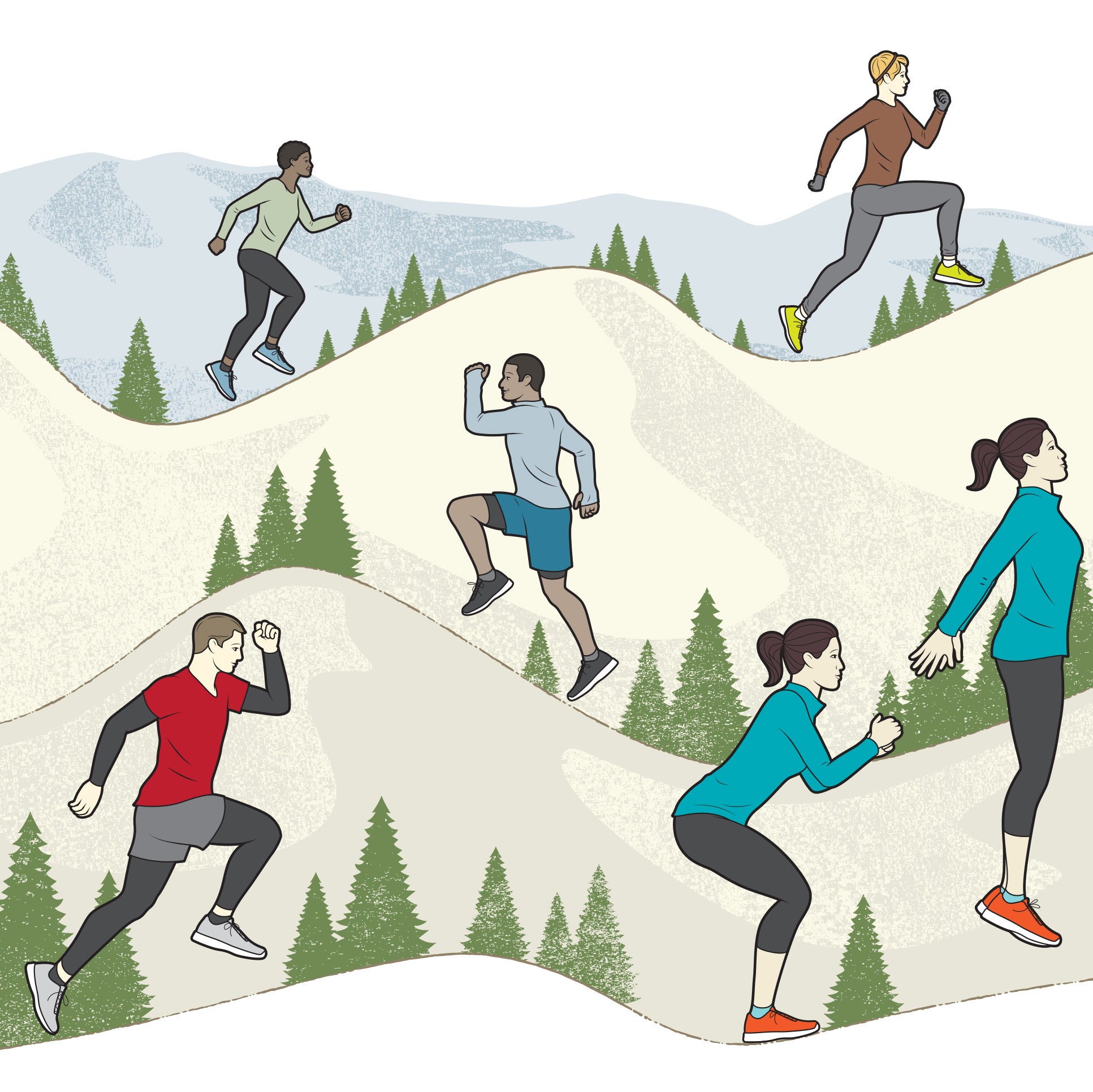There’s a good reason runners say “Hills pay the bills.” Not only is hill training crucial for rolling courses like the February 2020 Olympic Marathon Trials; it’s also the ultimate workout multitasker. As Rice University women’s track and cross-country coach Jim Bevan explains, running uphill strengthens muscles, boosts speed and agility, stretches the Achilles, and promotes hip extension. That makes it beneficial for everyone. All you need are a pair of shoes, a hill roughly 40 yards long, and about 30 minutes.
These are Bevan’s favorite drills, inspired by running coach and father of hill training Arthur Lydiard. Warm up with a jog or a brisk walk, then do five repetitions of each exercise, walking down in between.
Gentle Start
Why: Hills tax legs differently than level ground. Bevan recommends easing into it with a gentle climb. This will lead to better form and higher aerobic capacity.
How: Keep your eyes focused on the top and ascend at an easy pace. Maintain good posture while lifting your knees and pumping your arms. Leaning slightly into the hill can also be helpful.
High Knees
Why: Boosts reaction time and builds power—useful for skiers and mountain bikers.
How: Starting at the bottom, push off with one foot while driving the other knee up with enough power to get a few inches off the ground. Land, then push off with the leg that was just in midair. “Keep your toes cocked so you land on the ball of your foot and not the toe, and try to come down beneath your center of mass,” Bevan says.
Bounds
Why: Encourages a strong push-off and full hip extension, beneficial for runners and climbers.
How: Push off the ground with one foot, driving your leg up and as far out in front of you as possible while maintaining good posture. Land on the front foot while swinging the back leg forward to repeat on the other side. Your hip flexors should feel a stretch, and your arm swing should help with the movement.
Springy Strides
Why: These are all about improving your coordination, which will come in handy while climbing or trail running.
How: Repeat the steps for bounds, but increase your pace to a stride (one notch below a sprint). You’ll spend less time in the air but generate more power with every push-off, reaching the hill’s peak much more quickly. “Keep your hips high—don’t sit,” Bevan advises. “Relax from your shoulders and neck to achieve a full arm swing.”
Modified Frog Jumps
Why: This exercise strengthens the muscles in your legs, feet, and core. All athletes, especially those who sprint and jump, will benefit.
How: Start with your feet a little wider than shoulder width apart. Bend down into a half squat while swinging your elbows back and launch yourself up the hill. As you land, go straight back into a half squat and continue the cycle. Don’t come to a complete stop until you’ve finished the sequence. “It’s kind of like a dynamic squat with a jump at the end,” Bevan says. Aim for ten solid frog jumps in each repetition. Once you’ve mastered the modified version, you can progress to full frog jumps, bending your knees 90 degrees.

